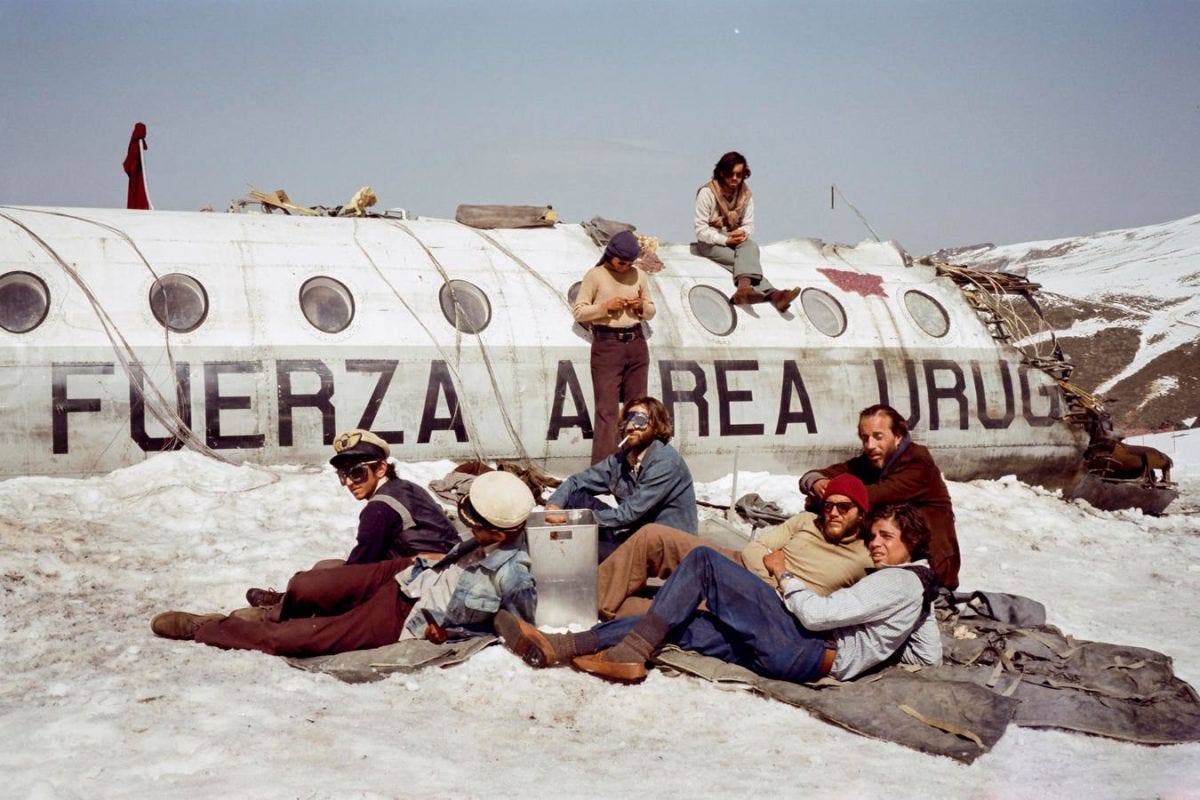On This Day 1972: When a Rugby Team Crashed into the Andes and Fought to Live
The truth behind the Andes crash isn’t divine - it’s human, brutal and real
Some stories are called miracles because we don’t want to face the truth behind them. On 13 October 1972, a plane carrying 45 people, including a Uruguayan rugby team, crashed in the Andes. What followed wasn’t divine intervention. It was human beings doing what they had to do in order to stay alive. For 72 days, they endured freezing altitudes, starvation, isolation, and the kind of choices that haunt the soul.
This isn’t about a miracle. It’s about what happens when survival strips you bare.
No Safety Net at 12,000 Feet
The moment the plane clipped the mountain, everything changed. Seats ripped out, fuselage smashed, lives ended on impact. Nando Parrado lost his mother immediately. His sister clung to life but faded days later. Others woke up bloodied and broken. A few, like medical students Gustavo Zerbino and Roberto Canessa, snapped into action. They stopped bleeding with scraps, realigned bones with instinct, and treated shock without medicine. The plane became a morgue and a surgery ward in one.
In those early hours, survival looked impossible. No food. No heat. No signal. Just snow and silence.
What You Eat When You Want to Live
Desperation doesn’t announce itself. It creeps in slowly. At first, they split the few chocolate bars, almonds, and wine. They melted snow using seat metal and bottled the water. They wore insulation from the torn-up plane. They tried everything.
Then came the day the radio crackled with finality: the search was over. No one was coming. No more hope, unless they made it themselves. Then, they faced the question no one wants to answer, would you eat your dead friend to survive?
Some people want to romanticise this moment. They shouldn’t. It was not heroic. It was horrifying. It was young men in the prime of life cutting frozen flesh from people they knew. It was a Catholic group bargaining with faith, justifying their actions to a God who might be watching. They didn’t want to do it. They had to. And once the decision was made, they all lived with it, or didn’t.
When Leaders Die, Others Step Forward
Marcelo Pérez was the team captain, a natural leader who helped hold the group together after the crash. But when an avalanche crushed the plane and killed eight more, including Marcelo, the survivors lost their strongest voice. Those left had to regroup, dig themselves out from both snow and grief, and find a new plan.
That’s when Parrado truly emerged. He’d already suffered loss, already buried his pain. But he kept going. And when the batteries salvaged from the wreckage failed to power the radio, when the final link to the outside world vanished, he didn’t quit. He planned a new expedition.
He prepared his body like a soldier. When the time came, he and Roberto Canessa set off west, into the peaks, not even knowing if they were heading the right way.
Ten days of walking. Ten days through snow, across jagged stone, and into the unknown. They finally saw cows. Then men on horseback. Then rescue.
Not Luck. Not a Miracle. Just Grit.
Sixteen people walked away from that mountain. Not because fate smiled on them. Not because they were chosen. Because they wouldn’t die lying down.
The world called it The Miracle of the Andes. The press focused on cannibalism, as if that were the story. But the real story is much harder to swallow: when humans are pushed past every limit, some fall and some rise. There’s no clean moral. There’s no mythic glory. There’s just will.
They rationed scraps, buried friends, fought off death, and climbed out of the jaws of a frozen grave. And even now, decades on, the power of that story doesn’t come from what they endured. It comes from the brutal clarity of what they chose to do, again and again, to stay alive.
We don’t need to call it a miracle. We should call it what it was, survival at its most savage, most honest, and most human.


